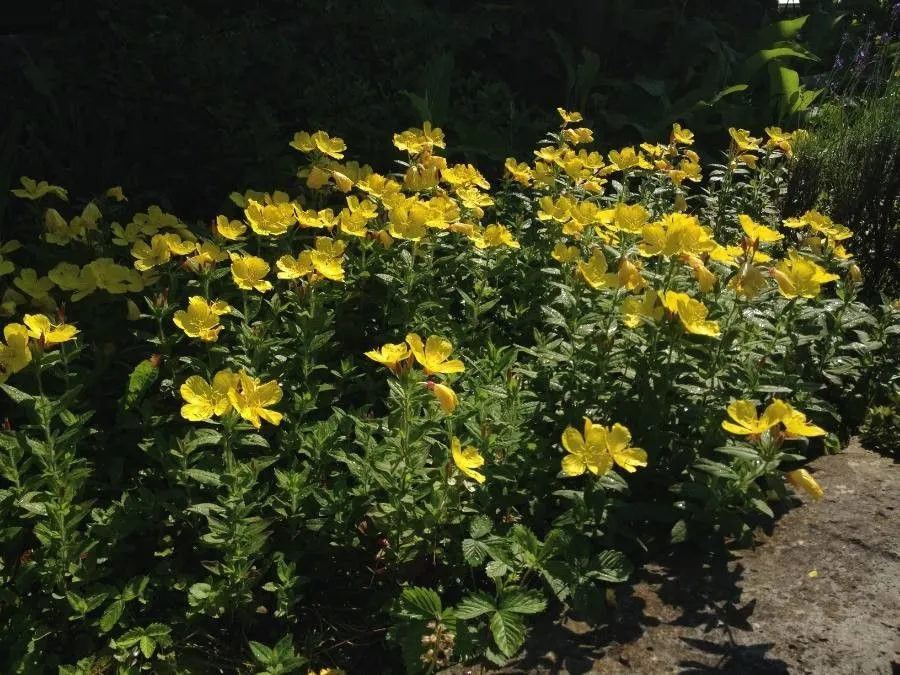
Author: L.
Bibliography: Sp. Pl.: 346 (1753)
Year: 1753
Status: accepted
Rank: species
Genus: Oenothera
Vegetable: False
Observations: EC. & E. U.S.A.
Narrow-leaf evening-primrose, known scientifically as Oenothera fruticosa, is a captivating herbaceous plant belonging to the Onagraceae family. A distinctive feature of this plant is its slender, lance-shaped leaves, which give it the common name “narrow-leaf.” This perennial plant is native to the eastern and central regions of the United States, where it thrives in a variety of habitats, including meadows, woodland edges, and open fields.
Typically blooming from late spring to early summer, Oenothera fruticosa produces vibrant yellow flowers that open during the evening and close by midday. This flowering pattern not only gives the genus its common name, evening-primrose, but also plays a crucial role in attracting nocturnal pollinators, such as moths. Each flower is composed of four broad petals, creating a bowl-like shape that can be quite captivating to observe.
The plant’s upright stature usually reaches heights between 1 to 3 feet, and it prefers well-drained soils with moderate moisture. While narrow-leaf evening-primrose can tolerate various soil types, it flourishes best in environments that simulate its natural habitat, often leaning towards sandy or rocky soil compositions.
Oenothera fruticosa is also known for its adaptability and resilience, making it an excellent choice for garden enthusiasts looking to add a touch of native wildflower beauty to their landscapes. Its relatively low maintenance needs and ability to attract beneficial insects, such as pollinators, make it a well-regarded addition among ecologists and gardeners alike.
The taxonomy and naming of Oenothera fruticosa can be traced back to Carl Linnaeus, who first described the species in his seminal work “Species Plantarum” in 1753. Since then, the plant has been a subject of interest both for its ecological virtues and its ornamental value in garden design.
In summary, the narrow-leaf evening-primrose is a versatile and attractive plant that stands out for its nighttime blooms, ecological benefits, and ease of care. Whether you are looking to enhance biodiversity in your garden or simply enjoy its vibrant summer flowers, Oenothera fruticosa is a commendable choice.
Eng: narrow-leaf evening-primrose, narrowleaf evening primrose, southern sundrops, sundrops, narrow-leaved evening-primrose, common sundrops, narrow-leaved sundrops, shrubby evening-primrose, yellow sundrops
Deu: sonnentropfen-nachtkerze
Swe: gullnattljus, gullnattljus/klubbnattljus
Ces: pupalka sivá
Fra: onagre frutescente
En: Narrow-leaf evening-primrose, Sundrops, Southern sundrops, Narrowleaf evening primrose, Narrow-leaved evening-primrose, Common sundrops, Narrow-leaved sundrops, Shrubby evening-primrose, Yellow sundrops
Cs: Pupalka sivá
Fi: Kultahelokki
Fr: Onagre frutescente
De: Sonnentropfen-Nachtkerze
Sv: Gullnattljus, Gullnattljus/klubbnattljus
Taken Jun 25, 2021 by AnnA (cc-by-sa)
Taken Jun 26, 2021 by AnnA (cc-by-sa)
Taken Jun 22, 2021 by Rita Rita (cc-by-sa)
Taken Jun 19, 2022 by Robert Hayen (cc-by-sa)
Taken Jun 9, 2021 by Neres Hauanda (cc-by-sa)
© copyright of the Board of Trustees of the Royal Botanic Gardens, Kew.
© copyright of the Board of Trustees of the Royal Botanic Gardens, Kew.
© copyright of the Board of Trustees of the Royal Botanic Gardens, Kew.
Taken Jun 21, 2020 by Sarah (cc-by-sa)
Taken Sep 23, 2020 by Eska (cc-by-sa)
Taken Sep 6, 2021 by Annemarie Ahrens-Stehle (cc-by-sa)
Taken Mar 9, 2020 by eric Buddelmeijer (cc-by-sa)
Taken Jun 14, 2018 by Michel Ligonie (cc-by-sa)
Taken Jun 18, 2017 by Yoan MARTIN (cc-by-sa)
Taken Jun 18, 2017 by Yoan MARTIN (cc-by-sa)
Taken Jul 2, 2021 by Zori 🌿🐝🌳 K (cc-by-sa)
Taken Jun 29, 2020 by Serge Dupont (cc-by-sa)
Taken Sep 23, 2020 by Eska (cc-by-sa)
Taken Jul 1, 2021 by Meduza (cc-by-sa)
Taken Jul 19, 2021 by Danielle Danielle (cc-by-sa)
Taken Jun 18, 2020 by флора 🌺 (cc-by-sa)
Taken Jun 20, 2022 by Laszlo Tosoki (cc-by-sa)
Taken Jun 9, 2021 by brkan stipo (cc-by-sa)
Taken May 25, 2012 by EOL − Ron Thomas (cc-by-nc-sa)
Taken Jan 1, 1900 by EOL − WVU Herbarium (cc-by-nc-sa)
Taken Jun 10, 2021 by Tifani Voelcker (cc-by-sa)
Taken Jan 1, 1900 by EOL − WVU Herbarium (cc-by-nc-sa)
Taken Jul 19, 2020 by Natacha Ouellet (cc-by-sa)
Taken Jan 1, 1900 by EOL − Gerrit Davidse (cc-by-nc-sa)
Taken Jun 10, 2021 by Tifani Voelcker (cc-by-sa)
Growth form>: Multiple Stem
Growth habit>: Forb/herb
Growth rate>: Moderate
Ph maximum: 7.0
Ph minimum: 4.5
Family: Myrtaceae Author: (F.Muell.) K.D.Hill & L.A.S.Johnson Bibliography: Telopea 6: 402 (1995) Year: 1995 Status:…
Family: Rubiaceae Author: Pierre ex A.Froehner Bibliography: Notizbl. Bot. Gart. Berlin-Dahlem 1: 237 (1897) Year:…
Family: Sapindaceae Author: Koidz. Bibliography: J. Coll. Sci. Imp. Univ. Tokyo 32(1): 38 (1911) Year:…
Family: Asteraceae Author: A.Gray Bibliography: Pacif. Railr. Rep.: 107 (1857) Year: 1857 Status: accepted Rank:…
Family: Fabaceae Author: Medik. Bibliography: Vorles. Churpfälz. Phys.-Ökon. Ges. 2: 398 (1787) Year: 1787 Status:…
Family: Aspleniaceae Author: (Cav.) Alston Bibliography: Bull. Misc. Inform. Kew 1932: 309 (1932) Year: 1932…